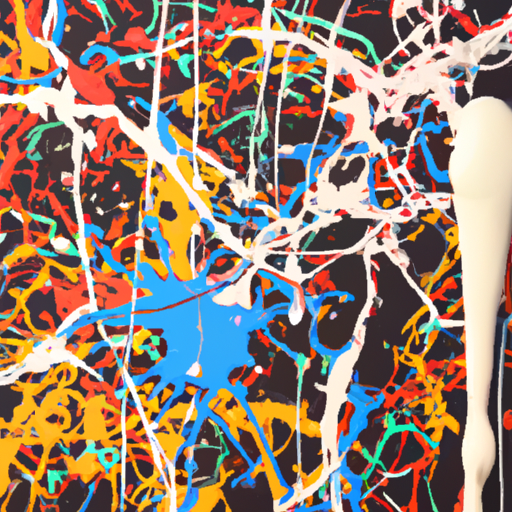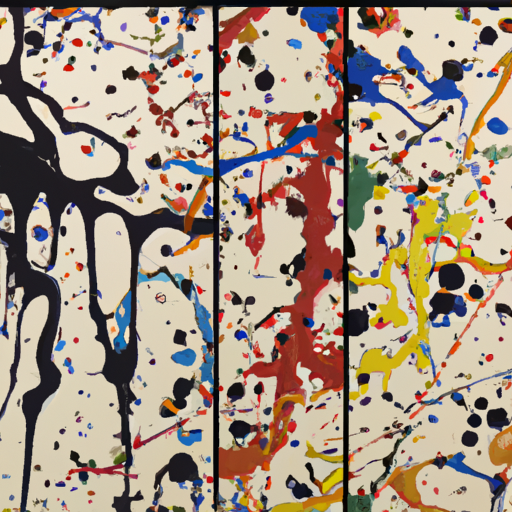
-
Table of Contents
- Jackson Pollock’s Drip Paintings and Their Influence on Textures in Design
- The Birth of Drip Painting
- The Influence on Textures in Design
- 1. Embracing Imperfection
- 2. Creating Depth and Movement
- 3. Exploring Texture as a Form of Expression
- Case Studies: Pollock’s Influence in Design
- Case Study 1: Graphic Design
- Case Study 2: Interior Design
- Case Study 3: Product Design
- Conclusion
Jackson Pollock’s Drip Paintings and Their Influence on Textures in Design

When it comes to abstract expressionism, one name that stands out is Jackson Pollock. His unique style of drip painting revolutionized the art world and continues to inspire artists and designers to this day. In this article, we will explore the influence of Pollock’s drip paintings on textures in design, examining how his techniques and concepts have shaped the way we perceive and incorporate textures in various design disciplines.
The Birth of Drip Painting
Before delving into the impact of Pollock’s drip paintings on design, it is essential to understand the origins of this groundbreaking technique. In the late 1940s, Pollock began experimenting with a new approach to painting. Instead of using traditional brushes and easels, he laid his canvases on the floor and dripped or poured paint onto them. This unconventional method allowed him to create intricate and dynamic compositions that were unlike anything seen before.
Pollock’s drip paintings were characterized by their energetic and spontaneous nature. He would move around the canvas, pouring, dripping, and splattering paint from above, creating intricate webs of lines and shapes. The resulting artworks were a visual representation of his emotions and inner thoughts, capturing the essence of abstract expressionism.
The Influence on Textures in Design
Pollock’s drip paintings had a profound impact on the world of design, particularly in the realm of textures. Here are some key ways in which his work influenced and continues to influence designers:
1. Embracing Imperfection
Pollock’s drip paintings celebrated imperfection and embraced the unpredictable nature of his technique. The drips, splatters, and overlapping lines created a sense of chaos and randomness that was both captivating and beautiful. Designers have taken inspiration from this approach, incorporating textures that mimic the organic and imperfect qualities of Pollock’s work. Whether it’s in graphic design, interior design, or product design, the use of textures that evoke a sense of spontaneity and imperfection adds depth and visual interest to the final product.
2. Creating Depth and Movement
One of the defining characteristics of Pollock’s drip paintings is the sense of depth and movement they convey. The layers of paint, the overlapping lines, and the varying densities of the drips create a three-dimensional effect that draws the viewer’s eye into the artwork. Designers have adopted this concept by incorporating textures that create a similar sense of depth and movement. Whether it’s through the use of gradients, patterns, or three-dimensional elements, textures inspired by Pollock’s drip paintings add a dynamic and engaging quality to design projects.
3. Exploring Texture as a Form of Expression
Pollock’s drip paintings were not just about the visual impact; they were also a form of expression. The textures created by the drips and splatters added a tactile quality to the artwork, inviting viewers to experience the painting on a sensory level. Designers have embraced this idea by incorporating textures that evoke specific emotions or sensations. For example, a rough texture may convey a sense of ruggedness or strength, while a soft texture may evoke a feeling of comfort or tranquility. By using textures strategically, designers can enhance the overall message and impact of their work.
Case Studies: Pollock’s Influence in Design
To further illustrate the influence of Pollock’s drip paintings on textures in design, let’s examine a few case studies:
Case Study 1: Graphic Design
In the world of graphic design, Pollock’s influence can be seen in various ways. For example, a designer working on a poster for a music festival may incorporate textures that mimic the drips and splatters of paint seen in Pollock’s work. This adds a sense of energy and movement to the design, capturing the essence of the music and creating a visually engaging composition.
Case Study 2: Interior Design
In interior design, textures inspired by Pollock’s drip paintings can be used to create unique and visually striking spaces. For instance, a feature wall in a living room may be adorned with a wallpaper that mimics the drips and splatters of paint. This adds a sense of artistic expression to the space, transforming it into a work of art in itself.
Case Study 3: Product Design
Product designers have also embraced Pollock’s influence by incorporating textures that evoke the same sense of depth and movement seen in his drip paintings. For example, a smartphone case may feature a textured pattern that mimics the overlapping lines and drips of paint. This not only adds visual interest to the product but also enhances the tactile experience for the user.
Conclusion
Jackson Pollock’s drip paintings have had a lasting impact on the world of design, particularly in the realm of textures. His unconventional techniques and concepts have inspired designers to embrace imperfection, create depth and movement, and explore texture as a form of expression. By incorporating textures inspired by Pollock’s work, designers can add visual interest, enhance the overall message, and create unique and engaging experiences for their audience.
